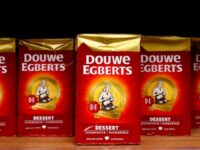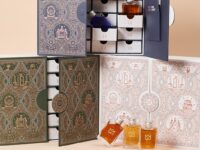
eAnother day, another food recall. Listeria, salmonella, undeclared allergens – whatever the case may be, recalls are on the rise. SAI Global reported a record spike in recalls in Australia’s food industry last year, up 45 per cent from 2017.
Microbial contamination, undeclared allergens and the presence of foreign matter were the major reasons for the rise in recalls. But could some of these recalls soon become a thing of the past?
CSIRO-backed Aussie startup PPB (parts per billion) Technology has pioneered a new device for on-the-spot testing of foods and beverages. The Cybertongue is the size of a six-pack esky and helps food producers and processors to detect harmful allergens and spoilage.
Inside FMCG chatted to Stephen Trowell, founder and MD of PPB Technology, about how it all works.
INSIDE FMCG: What was the motivation behind the development of Cybertongue?
Stephen Trowell: Going back almost a decade, I was aware that our best technology for measuring trace levels of components in food – and other samples – was severely lacking. Lab-based equipment is accurate and sensitive but it’s expensive, slow and needs highly trained people. There is an unmet need to be able to do analyses that are just as accurate and sensitive as the lab test but to do them “on the spot” with the answer available in minutes not days or weeks. And what I knew, being a biochemist, was that living organisms from the simplest bacteria all the way to human beings contain proteins that make very similar measurements in seconds.
So – long story short – we built a technology that used these sensing proteins to make measurements. And as soon as we started to talk about that publicly, researchers from the food industry came to us and asked us to solve some specific problems. As the process currently stands, companies have to send samples of their product to a lab and wait up to 10 days for results.
We saw an opportunity to not only make this process quicker and more accurate but also to help develop better food safety conditions in Australia. This technology will help ensure fewer Australians are harmed or inconvenienced because of slow food testing.
INSIDE FMCG: What can this technology detect during the production process to ensure an unsafe product doesn’t hit shelves?
ST: Detecting spoilage factors from bacteria was the first request we had. At the moment we’ve focused the bulk of the work on detecting lactose in products that are meant to be lactose-free. We see this as a valuable proof of concept for the technology. We’re also planning to use the technology to detect common allergens that can slip undetected through the current system.
Examples include milk proteins, eggs and nuts, and eventually soy, wheat, fish and crustaceans. We are also thinking beyond those specifics to a very broad set of targets, including antibiotics or pesticides, as well as vitamins or other beneficial elements in food.
INSIDE FMCG: Can you explain how it works?
ST: At the heart of the system are tiny molecular machines, or biosensors. These are proteins that we have engineered to measure whatever it is that we are interested in.
For example, in the case of lactose, we took a single protein that evolved in nature to detect low levels of lactose, and we stitched that together with two other naturally occurring proteins. One of these produces blue light, the other green light. The way we arranged it, the more lactose there is, the less green light we see relative to blue. Cybertongue measures the ratio of green to blue light. The principle is that simple.
INSIDE FMCG: Is a certain level of scientific or tech know-how required to use this system?
ST: At the moment, our user adds their sample to our biosensor and then loads that and a second chemical onto the machine and presses the ‘Go’ button. We’re also planning to further simplify the procedure so that more or less anyone can use it, with the software guiding them through the process.
INSIDE FMCG: How accurate are the results?
ST: This is a very accurate method that can match or exceed the current gold standard. As part of our product development, we are currently testing and validating the whole procedure under real-world conditions to give our customers confidence in the accuracy and precision of their results.
INSIDE FMCG: How do you expect this technology to impact Australian food producers?
ST: The technology will offer Australian food producers greater confidence in their food-testing processes. It will save them money through more economical use of ingredients, earlier product release, longer shelf lives, less waste and fewer product recalls.
To read the rest of this interview from the July issue of Inside FMCG subscribe here.
















